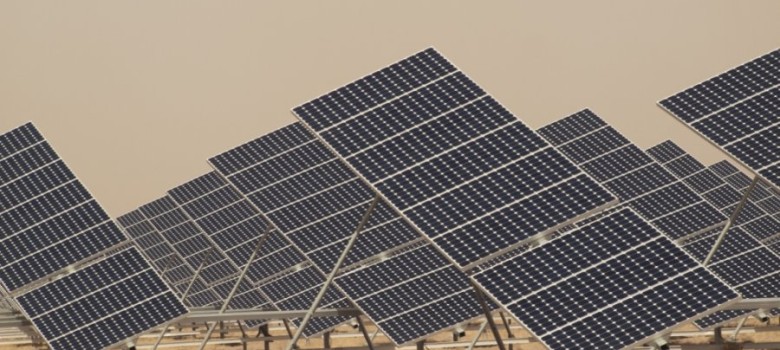
Introduction to solar power plants
The majority of our power comes indirectly from the sun, but the challenge is to make use of solar energy directly and in a non-polluting fashion. This is not a new idea; development of solar energy dates back more than 100 years, to the middle of the industrial revolution. In this section, we discuss solar PV and solar heating for the home, but there is also a lot of capital investment directed at producing electricity from solar on a commercial scale.
Types of solar power plant
There are two types of large scale solar power plants: the first type are photovoltaic power plants, the largest of which is situated in Canada and is the 97MW Sarnia PV power plant. There are currently eight PV plants, located mainly in Europe, that have a power outage of over 50MW, however there are eight plants planned for the USA that have received funding guarantees that are in excess of 150MW, and these are all due to be completed between 2013 and 2015. The largest planned installation is in China, and this will produce 2000MW at peak (as a reference point the largest nuclear power plant is rated at more than 7900MW)
The other type is the commercial concentrated solar power plants (CSP); these were first developed in the 1980s. The largest CSP is located in the Mojave Desert in California, known as SEGS CSP and has an output of 354MW. The majority of CSP plants are parabolic troughs (see below), and are located in Spain and the USA. Solar power plants provided Spain with 3% of its electricity in 2010, and with many more CSP plants in the pipeline this is sure to increase over the coming years.
How solar photovoltaic power plants work
The process of converting light (photons) to electricity (voltage) is called the solar photovoltaic (PV) effect. Photovoltaic solar power cells convert sunlight directly into solar power (electricity). They use a thin layer of semi-conducting material, usually silicone, encased between a sheet of glass and a polymer resin. When exposed to daylight electrons in the semi-conducting material become energised. These electrons are then able to flow through the material generating a direct current (DC). These are also used for residential needs on a smaller scale, and are discussed in more detail here.
How concentrated solar power plants work
CSP power plants do not convert sunlight directly into electricity, instead they use lenses and mirrors and tracking systems to focus a large area of sunlight into a small beam, which is then used as the heat source much like in a conventional power station. There are a few types of CSP power station but all use the same principal of heating the working fluid by direct sunlight.
Parabolic trough solar power system
In the case of the parabolic trough system, the sun’s energy is concentrated by parabolically curved, trough-shaped reflectors onto a receiver pipe running along the inside of the curved surface. This energy heats working fluid flowing through the pipe, and the heat energy is then used to generate electricity in a conventional steam generator.A collector field comprises many troughs in parallel rows aligned on a north-south axis.
Power tower solar power system
A power tower converts sunshine into clean electricity for the world’s electricity grids. The technology utilises many large, sun-tracking mirrors (heliostats) to focus sunlight on a receiver at the top of a tower. A heat transfer fluid heated in the receiver is used to generate steam, which in turn is used in a conventional turbine-generator to produce electricity.
Early power towers (such as the Solar One plant) utilise steam as the heat transfer fluid; current US designs (including Solar Two, pictured) utilise molten nitrate salt because of its superior heat transfer and energy storage capabilities. Current European designs use air as the heat transfer medium because of its high temperature and its ease of use.
Parabolic dish solar power system
Parabolic dish systems consist of a parabolic-shaped point focus concentrator in the form of a dish that reflects solar radiation onto a receiver mounted at the focal point. These concentrators are mounted on a structure with a two-axis tracking system to follow the sun. The collected heat is typically utilized directly by a heat engine mounted on the receiver moving with the dish structure.
Solar power and the UK industry
Producing electricity on a mass scale in the UK does is not currently as commercially viable as wind power or hydroelectricity, although small scale community projects do exist. For example the Westmill Solar Plant, built in 2011, has one of the largest number of arrays, situated between Oxford and Swindon. Although the level of Feed-in Tariff support was cut for small scale producers, twice this year, ROC support still remains at two certificates per mWh of electricity produced for generators of over 5MW. In addition, the UK remains one of the leading nations in terms of providing solar power engineering expertise and solar energy services round the world and will continue to do so over the next few years.











please sir send me your parabolic solar panel catalog and its models with technical details also send me terms and conditions for dealership for India.
Regards
Susheel saraswat
Faridabad,hariyan ,India
Dear sir,
We are looking 4 no;s of solar system of 1.5 MW 425 AC for our under construction residential projects.
Will you please send the system quotation,availability and information/Broucher etc.
thanks
Saleem
Procurement Officer
We own 10 acres of flat grassland , of which none is shaded or over looked. What would be the options for a solar ‘farm’ . To maybe self install and feed into the national grid ?
Or maybe lease the land onto an established, or power co.
Would you kindly offer some advice regarding options.